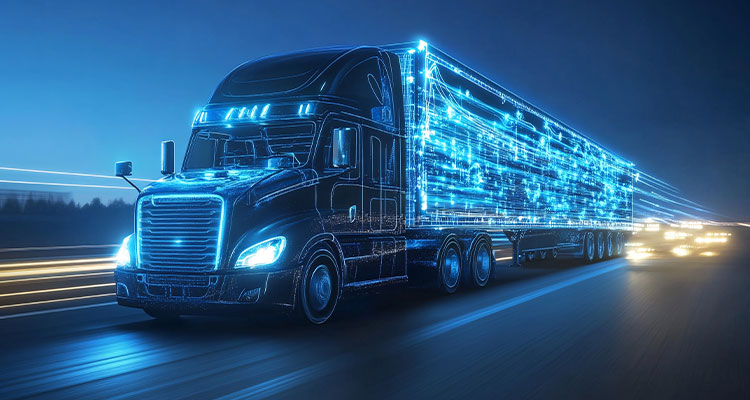
Mahesh Veerina on how AI in the supply chain drives real business value
The buzz around Artificial Intelligence (AI) in the supply chain ecosystem isn’t new, but we’re finally at an inflection point where hype meets reality. Despite heavy investments, many organizations struggle to realize tangible returns from AI initiatives. A recent survey found that 69 percent of companies haven’t seen high ROI on supply chain tech investments, yet Gartner predicts that by 2029, ten percent of global boards will use AI guidance to challenge executive decisions.
This gap between investment and outcome isn’t surprising. While companies eagerly implement solutions marketed as ‘AI-powered,’ many fail to address fundamental challenges that prevent these tools from delivering value.
The perfect storm of supply chain complexity
Today’s supply chains face unprecedented complexity. Global organizations spanning multiple countries and thousands of suppliers generate terabytes of data daily. This flood of information creates four critical challenges:
- Traditional systems and approaches were not designed to handle the volume and variety of signals flowing through modern networks. When everything demands attention, nothing gets it. Supply chain leaders spend significant portions of their time managing exceptions and alerts daily, rather than focusing on the most important high impact decisions for their business.
- Decision-making windows continue to shrink. The pace of market changes demands responses in hours, not days, leaving little time for manual analysis and collaboration.
- Labor shortages hit supply chains particularly hard. The manufacturing sector alone faces over 600,000 vacancies, with experienced professionals retiring faster than new talent arrives.
- Siloed operations create fragmented views of performance. Without end-to-end visibility and correlation across their network, organizations optimize parts at the expense of the whole.

Genuine transformation
The most successful AI implementations in the supply chain move beyond simple automation to fundamentally transform operations. First, predictive operations enable supply chains to anticipate disruptions rather than merely react to them. By analyzing historical patterns alongside real-time signals, AI systems can forecast problems before they impact operations. Similarly, intelligent decision support filters noise from signals based on business impact and can recommend specific actions. This typically reduces exception alerts by 60-to-70 percent, allowing teams to focus on strategic high impact business decisions rather than drowning in notifications.
AI’s pattern recognition capabilities identify non-obvious relationships between seemingly unrelated events that human analysts might miss. In one case, a consumer goods company discovered that slight variations in packaging materials were causing downstream quality issues that had gone undetected for years.
Additionally, as experienced professionals retire, supply chain digital twins help build a knowledge graph of operations, and AI systems preserve and expand institutional knowledge by capturing and applying critical insights. These systems continuously learn from both successful and unsuccessful decisions, building an institutional memory that ensures valuable expertise isn’t lost during workforce transitions.
Four key steps
Organizations that realize substantial ROI from supply chain AI focus on these four critical factors:
- Start with clear business objectives. Successful implementations target specific pain points rather than implementing AI for its own sake. One healthcare system began with the simple goal of ensuring critical medical supplies were available at the right place and right time when needed, then expanded as they gained experience.
- Prioritize data quality. AI is only as good as its inputs. Before implementation, successful organizations conduct thorough audits of data quality across systems and develop strategies to address gaps. This often involves combining structured enterprise data with both structured and unstructured external signals.
- Manage change thoughtfully. Technical implementation is only half the battle. Organizations must help teams transition from reactive firefighting to proactive management, often requiring new skills and mindsets.
- Balance automation with expertise. The most effective implementations complement, rather than replace, human expertise. By automating routine decisions, experts can focus on challenges requiring judgment and creativity.
What to look out for
As AI capabilities continue to evolve, three trends will shape supply chain applications. 1. AI enabled ‘behavioral engines’ embedded into operational workflows to analyze complex scenarios with real-time contextual data and help with decision support and augmentation. This will help eliminate the noise in the system without bias and deliver faster and more accurate decisions.
- We’ll see specialized functional AI agents like planners or logistics agents, designed for specific supply chain functions that incorporate deep domain knowledge and work alongside human counterparts to enhance decision support and productivity, as well as significantly reduce costs.
- Eventually, AI agents and multi-agentic workflows lead to decision automation with explainability for trust and compliance, ensuring transparency and integrity of decision making. Organizations can deploy fleets of agents for functional areas like planning, logistics, distribution, and fulfillment tasks to assist and augment human workforce to be more effective and productive.
Above all, AI will increasingly facilitate collaboration across organizational boundaries, helping trading partners optimize joint operations rather than working in isolation. Successful organizations will also emphasize explainability alongside performance, ensuring teams understand AI recommendations to build trust and maintain appropriate oversight.
For supply chain leaders, the message is clear: AI’s potential extends far beyond automating existing processes. By addressing fundamental challenges and focusing on business outcomes, organizations can move beyond the hype to realize substantial, measurable value from their AI investments.
For supply chain innovation, it’s time to see what smart can do.™
Mahesh Veerina
As the CEO and President of ParkourSC, Mahesh Veerina drives the strategic vision and execution of cutting-edge AI technology to transform global businesses. With over two decades of leadership experience, Mahesh’s expertise in cloud computing, AI, security, and telecom has earned him several technology patents and made him a trusted thought leader.